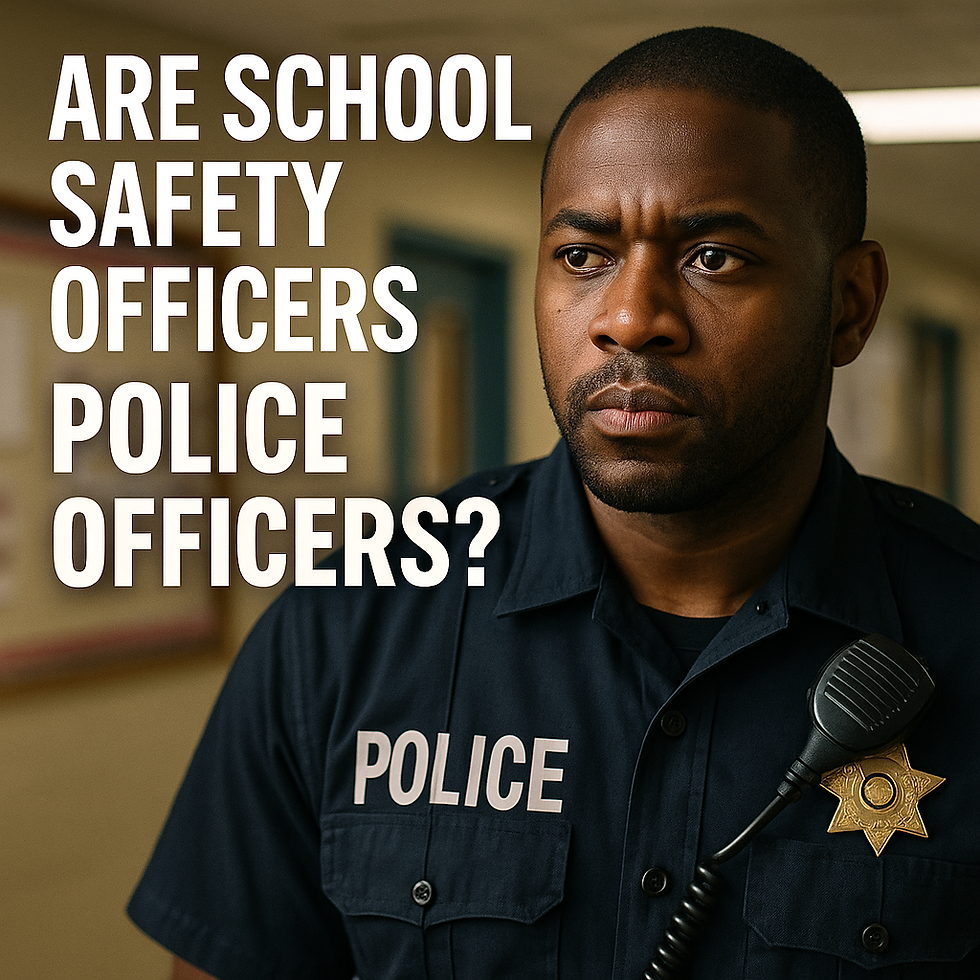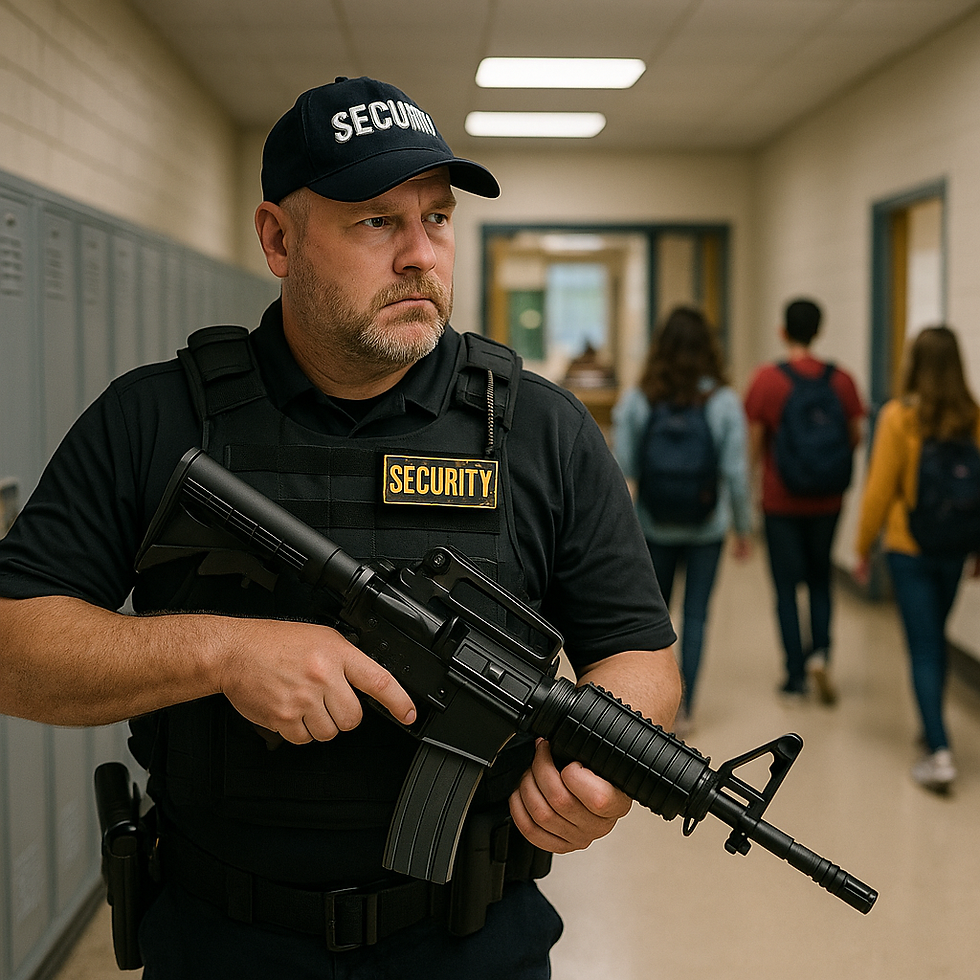Best Non-Lethal & Less-Lethal Tools for Security Guards (Top 5 — 2025)
- CrisisWire

- Oct 3
- 5 min read
Updated: Oct 3
— why “non-lethal” matters
Security teams increasingly rely on non-lethal and less-lethal tools to control threats, protect the public, and reduce injuries and liability. A smart toolkit gives guards options that scale force, improve de-escalation chances, and document incidents for legal review.
Industry guidance and private-security practice list the same core categories repeatedly: chemical sprays, conducted energy devices, impact tools, luminous/temporary-disorienting tools, and restraints. (ASIS International)
The Top 5 (what to carry and why)
1) Professional Pepper Spray — SABRE / Fox Labs (Police-grade formulas)
Why: Pepper (OC) sprays give distance, rapid incapacitation, and a short-term window to secure a subject. Professional formulas (e.g., SABRE or Fox Labs) are police-strength, often include UV dye for later ID, and come in safety housings that reduce accidental discharge. (Sabre Red)
Pros: Highly portable, inexpensive, immediate effect, legal in many jurisdictions for licensed guards.
Cons: Wind/indoor re-contamination risk; requires training in aim and aftercare; shelf-life management.
Tip: Use stream/foam formats for windy/indoor use and choose units with UV dye for evidence. (Pew Pew Tactical)
2) Conducted Energy Devices (Tasers / Stun Guns) — Axon & tactical stun guns
Why: Conducted energy devices (CEDs) provide a non-lethal electrical disruption that can stop violent behavior from a safe distance (for cartridge Tasers) or at point-blank (stun guns). Axon is the primary professional maker for law enforcement hardware; consumer/staff options exist (stun-gun/tactical combos) that security supervisors commonly equip after policy/training. (Reuters)
Pros: Strong stopping power, can rapidly end a violent encounter, electronic evidence options (some units log events).
Cons: Legal/regulatory restrictions vary widely — many jurisdictions restrict CEDs to trained/licensed users; medical/ethical considerations require formal policy and documentation.
Tip: If your company equips CEDs, require manufacturer training and written medical/force policies that match local law. (Reuters)
3) Expandable (Telescoping) Baton — ASP / quality brands
Why: Batons let a trained officer apply pain compliance techniques while retaining control over force escalation. Modern telescoping batons (ASP, Streetwise, etc.) are rugged, easy to stow, and widely recommended in security circles for reactive defense. (Pew Pew Tactical)
Pros: Durable, no chemical exposure, useful for blocking/retention and creating distance.
Cons: Heavy use requires training (strike placement, control holds); many employers/provinces limit baton carriage to certified personnel.
Tip: Prioritize training in legal use-of-force and de-escalation; practice retention drills to avoid weapon grabs. (Pew Pew Tactical)
4) Tactical Flashlight (EDC duty light) — ThruNite / Olight / Thrunite TN12 / Olight S2R style
Why: A bright tactical light does double duty: it temporarily disorients an aggressor when used in a high-lux flash and gives you reliable illumination for searches and documentation. Many modern duty lights are compact, USB-C rechargeable, and built tough for impact and weather. (1lumen.com)
Pros: Legal everywhere, low training requirement, also a blunt instrument if necessary, essential for night operations.
Cons: Not a guaranteed stop — combine with evasive tactics and partner tools.
Tip: Choose 800–1,500 lumen lights with a strobe option and simple controls; train to use the bezel for defense only as last resort. (1lumen.com)
5) Disposable Restraints / Flex-Cuffs (zip-cuff style) — Safariland / Max-Cuff / high-tensile options
Why: When a subject must be secured quickly (mass arrests, crowd control, or when standard handcuffs aren’t practical), disposable flex cuffs are cheap, lightweight, and fast to apply. They’re a standard carry item for many security teams and first responders. (Galls)
Pros: Fast application, low cost, multiple units per officer for mass-casualty or multi-subject incidents.
Cons: Single-use (must be cut off), can cause circulation issues if overtightened — require training and medical aftercare protocol.
Tip: Carry a cuff cutter/scissors and log each restraint (time, reason, removal time) for legal compliance. (Galls)

Quick Case Studies (real world, short)
Campus security that layered pepper spray + tactical flashlight reported fewer physical takedowns and faster escort times during after-hours incidents (industry guidance: blend tools with communication protocol). (ASIS International)
Retail loss prevention teams using disposable restraints plus a baton for distance reported faster handover to police with fewer bystander injuries — as long as restraint procedures were documented and supervised. (Galls)
Actionable Playbook (3–7 step checklist)
Policy first: Written force-use policy, medical/aftercare guidance, and local law review. (Non-lethal tools are still force.) (ASIS International)
Equipment standardization: Choose one pepper spray model (carry & shelf-rotate), one baton model, one flashlight model, and one restraint type. Keep spare cartridges and batteries. (Pew Pew Tactical)
Mandatory training: Annual hands-on certification for batons and CEDs; skill checks for spray deployment and safe restraint. (SafeWise)
Documentation: Every use incident logged (time, reason, video if available, medical checks, release agency).
Medical & legal partner: Signed protocol with local EMS and legal counsel to review use-of-force incidents.
Daily kit check: Inspect sprays for pressure, batons for integrity, flashlights charged, and carry at least one cutter for flex cuffs. (Pew Pew Tactical)
Leadership responsibility & liability
Employers and site managers must treat non-lethal tools as controlled use equipment: training, inventory logs, clear escalation matrices, and medical aftercare requirements reduce liability. Boards and operations managers should ensure policy + training + auditing before issuing devices; equipment without training increases legal risk. (ASIS International)
Resource backlinks & further reading
CrisisWire Blog Hub: https://rypulmedia.wixsite.com/crisiswire/blog
ASIS: “5 Nonlethal Weapons Used by Private Security” (industry guidance). (ASIS International)
Pepper Spray reviews & picks (Fox Labs / SABRE). (Pew Pew Tactical)
Stun/Taser reviews (SafeWise) and industry report on Axon (maker of TASER). (SafeWise)
Expandable baton reviews (PewPewTactical) and ASP product pages. (Pew Pew Tactical)
Flex cuffs & disposable restraints guides (Galls / HandcuffWarehouse). (Galls)
Need a policy template, on-site training checklist, or a tailored equipment spec sheet for your team? Email CrisisWire at 📧 crisiswire@proton.me or visit 🌐 https://rypulmedia.wixsite.com/crisiswire.
#CrisisWire #SecurityTools #NonLethal #CampusSafety #BusinessContinuity #SecurityTraining #PepperSpray #TaserSafety #DutyGear
FAQ (3 quick PAA-style Q&A)
Q: Can private security use Tasers?
A: It depends on local law and employer policy — many jurisdictions restrict CEDs to trained/licensed personnel or prohibit them entirely; consult counsel and vendor training. (Reuters)
Q: What’s safer — pepper spray or stun gun?
A: Both have tradeoffs. Pepper spray works at distance and affects breathing/eyes; CEDs provide motor disruption. Safety and legality hinge on training and medical policy. (Pew Pew Tactical)
Q: Are disposable flex-cuffs a replacement for handcuffs?
A: No — they’re a fast temporary restraint (crowd control, multiple subjects). Traditional metal cuffs remain standard for long-term custody; flex-cuffs require cutting for removal and careful monitoring. (Galls)





Comments